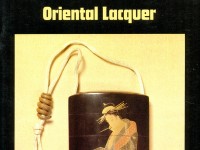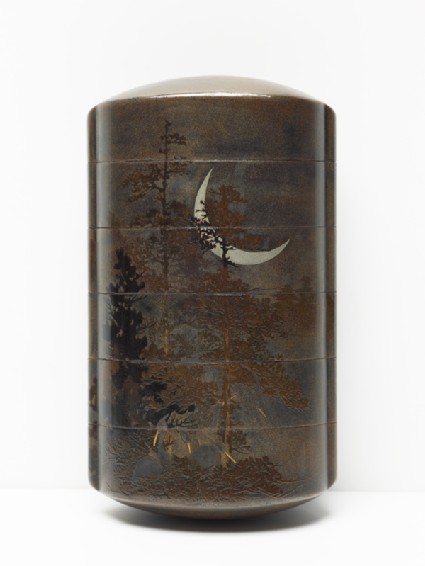Oriental Lacquer: Chinese and Japanese Lacquer from the Ashmolean Collections
A catalogue of the Ashmolean’s collection of Chinese and Japanese lacquer (published Oxford, 1983).

Publications online: 39 objects
- Reference URL
Actions
Inrō with egrets and trees under a crescent moon
-
Literature notes
Inro, five cases. Trees and rocks in moonlight. Raised and polished lacquers on a dark ground. -
Details
- Associated place
- Date
- 19th century (1801 - 1900)
- Material and technique
- wood, with maki-e, nashiji, and fundame lacquer decoration
- Dimensions
- 9.8 x 5.5 x 3.3 cm max. (height x width x depth)
- Material index
- Technique index
- Object type index
- No. of items
- 6
- Credit line
- Presented by Sir Herbert Ingram, 1956.
- Accession no.
- EA1956.1745
-
Further reading
Impey, O. R., and M. Tregear, Oriental Lacquer: Chinese and Japanese Lacquer from the Ashmolean Museum Collections (Oxford: Ashmolean Museum, 1983), no. 12 a on p. xi, illus. p. 12
Glossary (4)
fundame, lacquer, maki-e, nashiji
-
fundame
Very fine gold powder densely sprinkled onto wet lacquer, giving a smooth, matt surface.
-
lacquer
Chinese and Japanese lacquer is made from the sap of the lacquer tree, which is indigenous to Eastern China. It is applied to wood as a varnish or for decorative effect. In India and the Middle East, lacquer is made from the deposit of the lac insect.
-
maki-e
(‘sprinkled design’) generic term for lacquer decoration using powdered metals sprinkled onto wet lacquer to create a design
-
nashiji
(‘pear skin ground’) tiny, irregularly shaped flakes of gold embedded in amber coloured wet lacquer and then polished to a fine sheen
Location
Objects are sometimes moved to a different location. Our object location data is usually updated on a monthly basis. Contact the Jameel Study Centre if you are planning to visit the museum to see a particular object on display, or would like to arrange an appointment to see an object in our reserve collections.
Galleries
Collection trails
Publications online
-

Oriental Lacquer: Chinese and Japanese Lacquer from the Ashmolean Collections
Inro, five cases. Trees and rocks in moonlight. Raised and polished lacquers on a dark ground.
Notice
Object information may not accurately reflect the actual contents of the original publication, since our online objects contain current information held in our collections database. Click on 'buy this publication' to purchase printed versions of our online publications, where available, or contact the Jameel Study Centre to arrange access to books on our collections that are now out of print.
© 2013 University of Oxford - Ashmolean Museum






